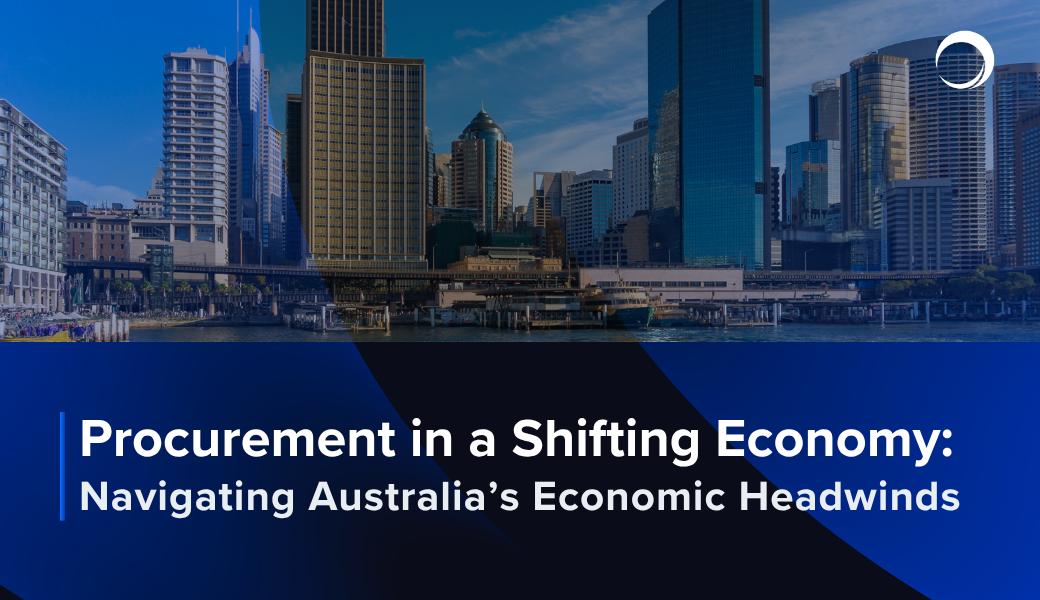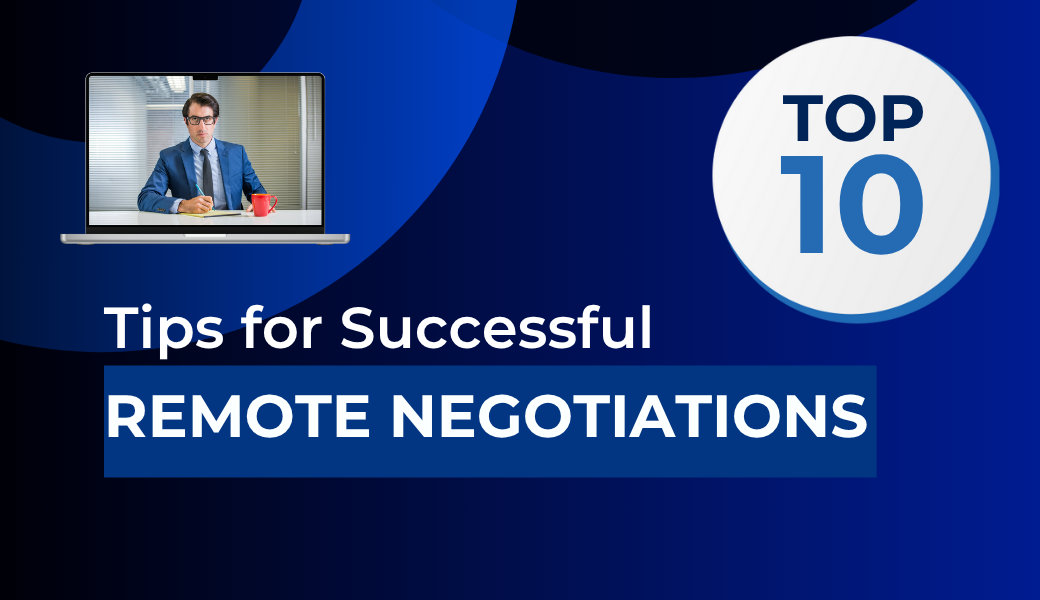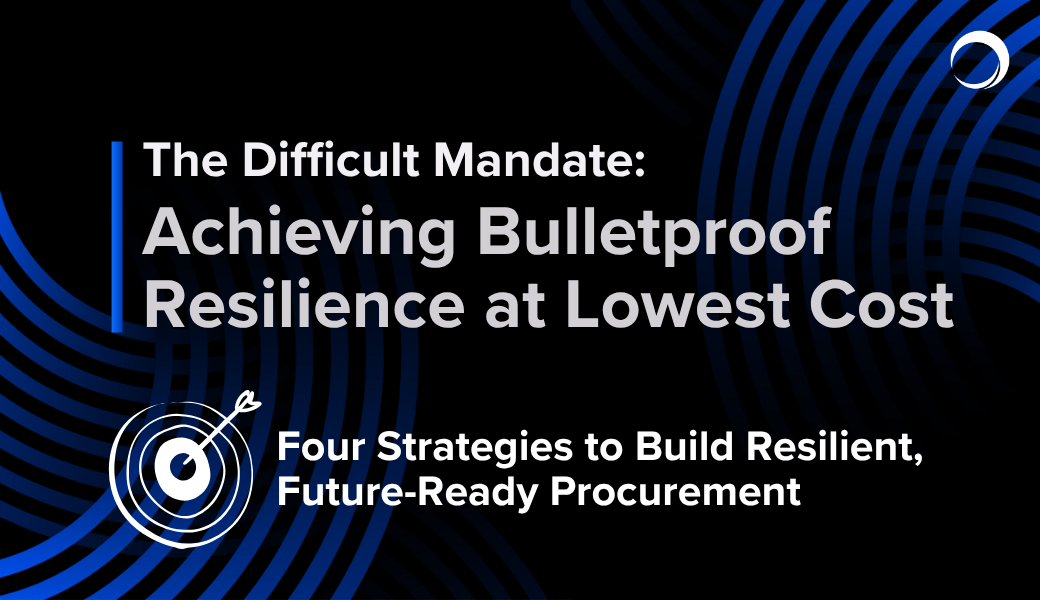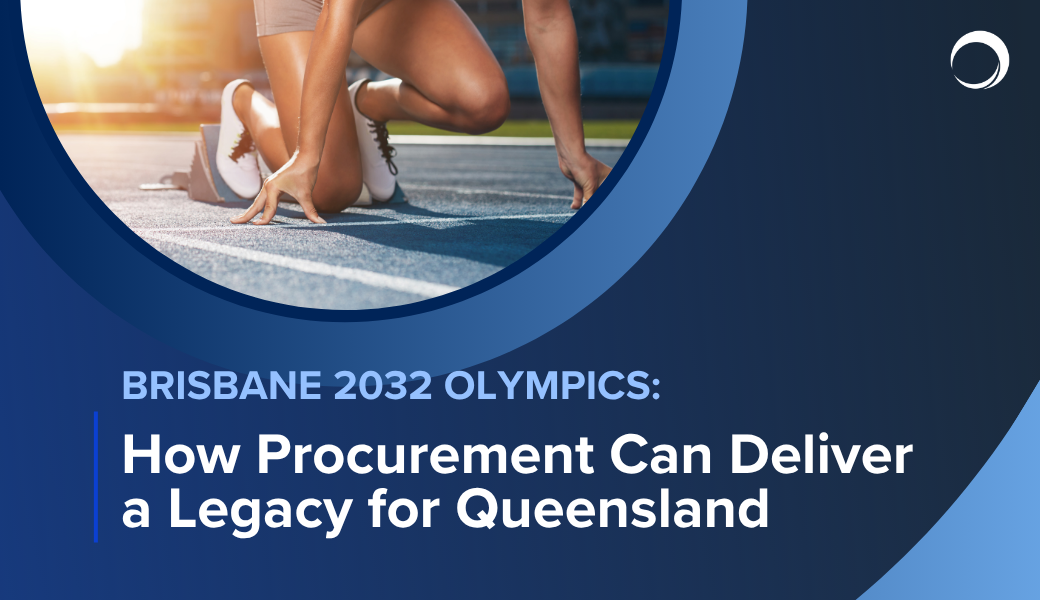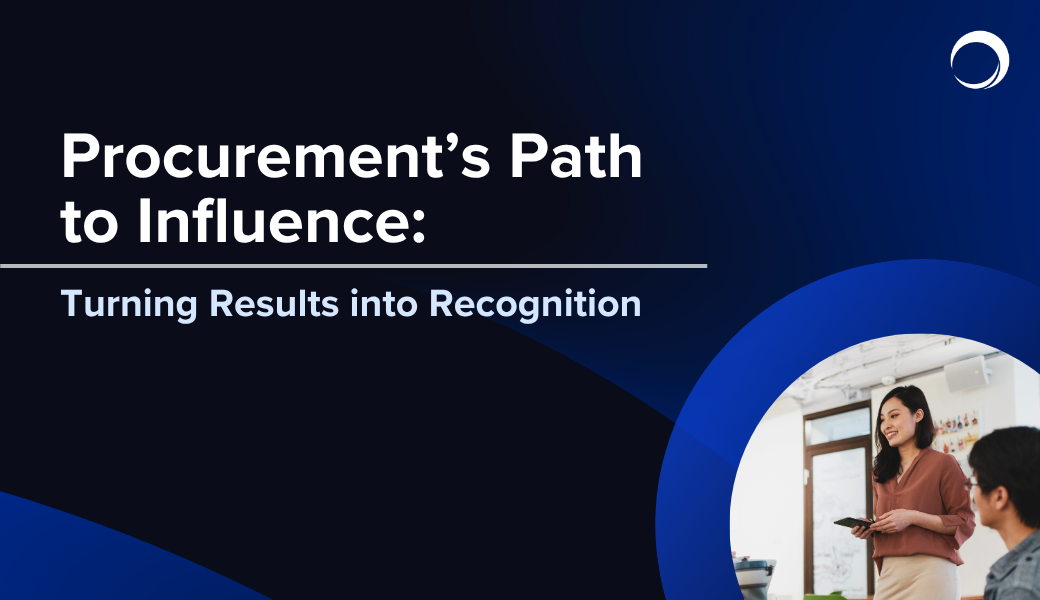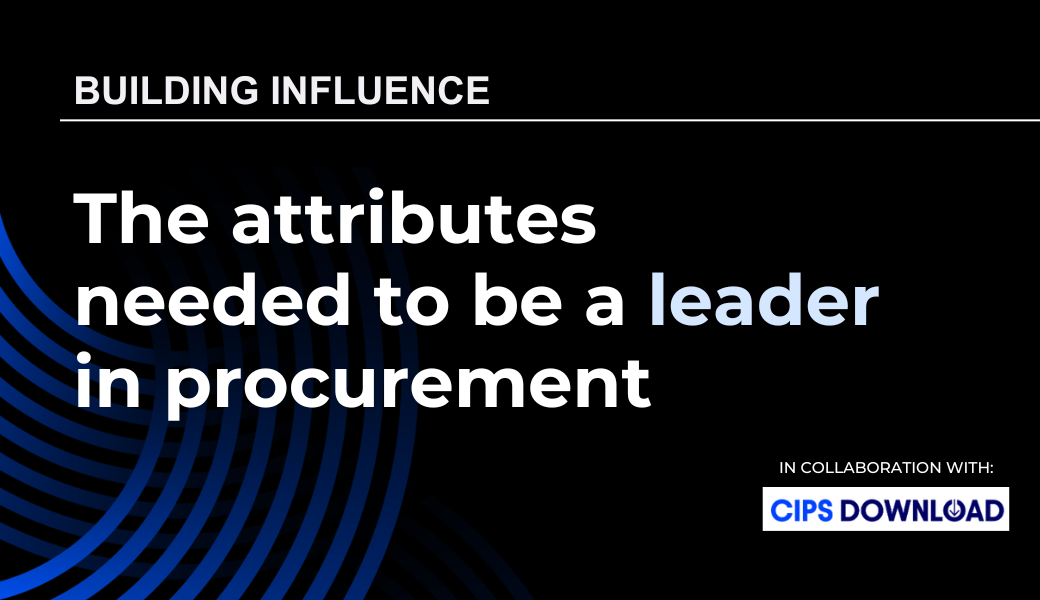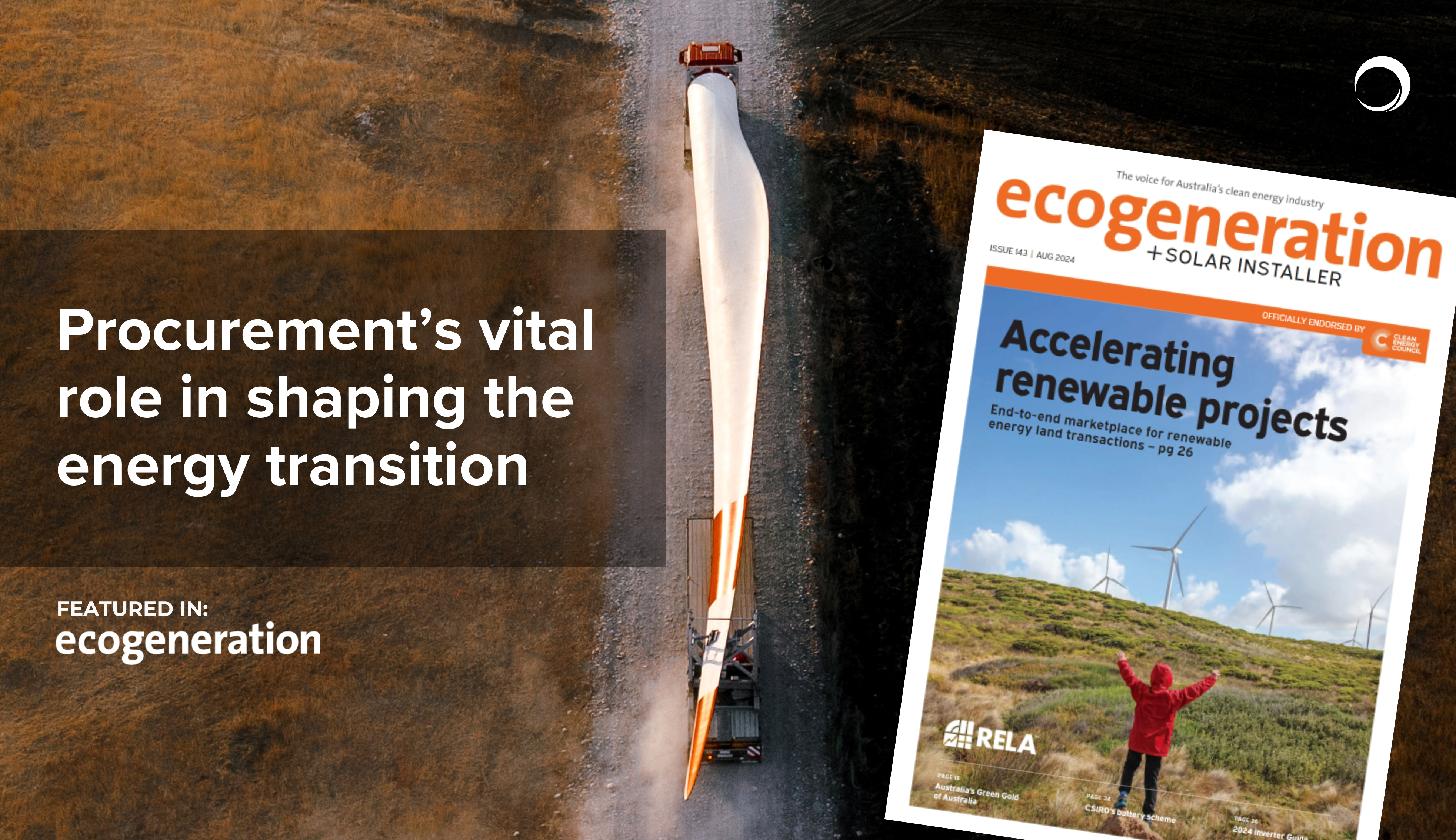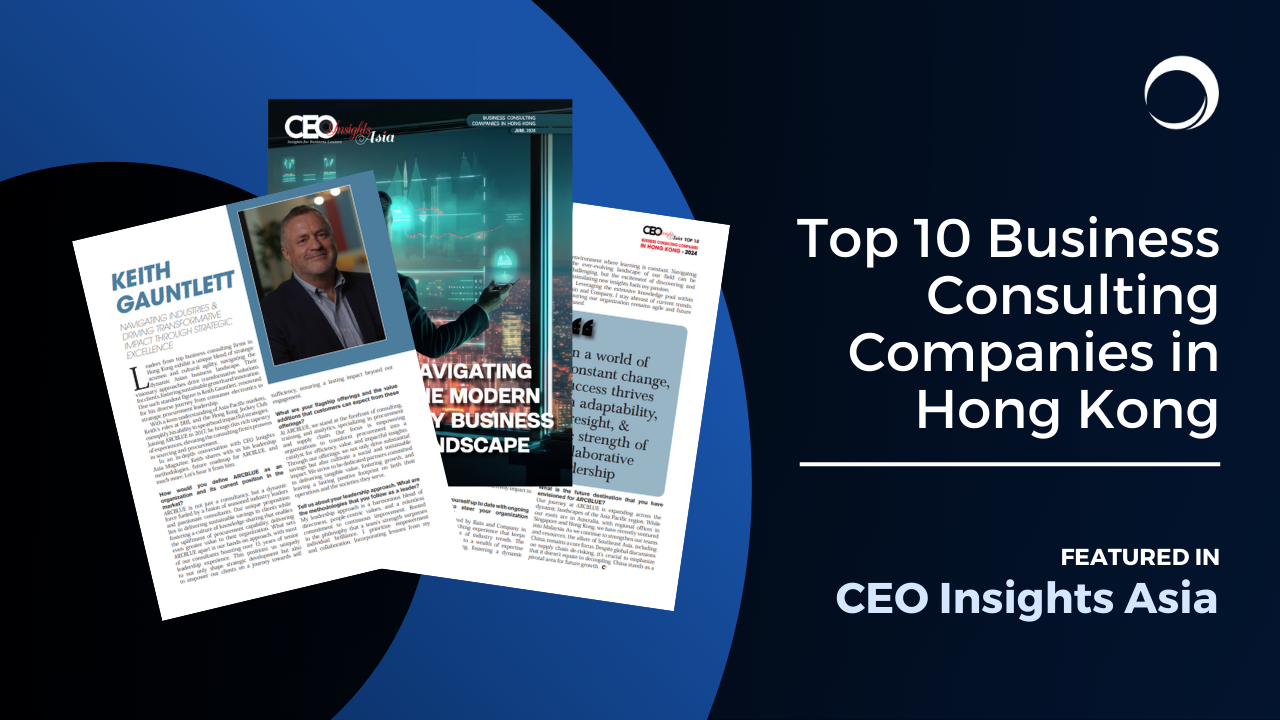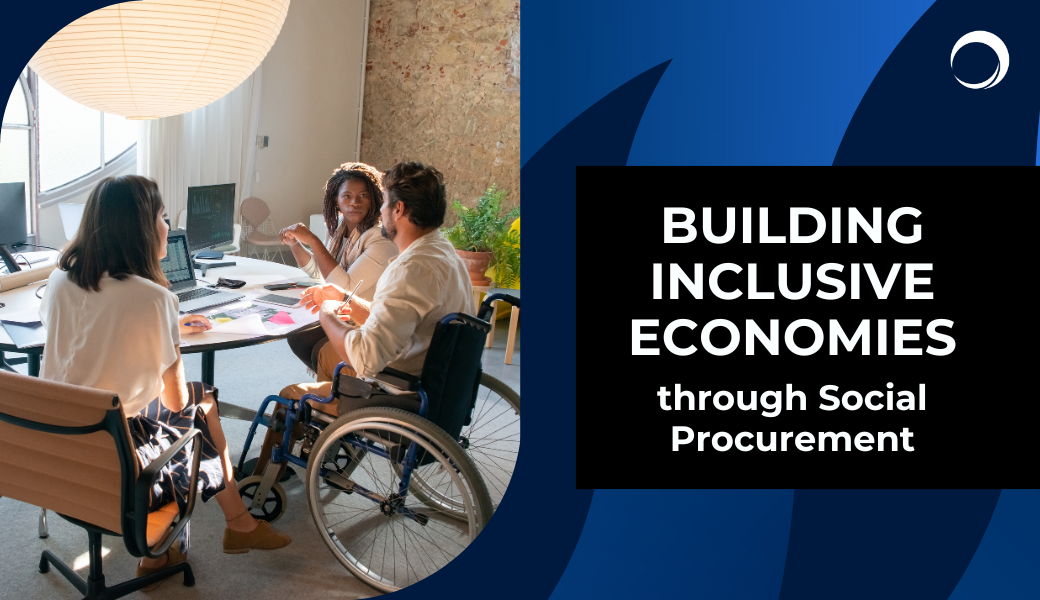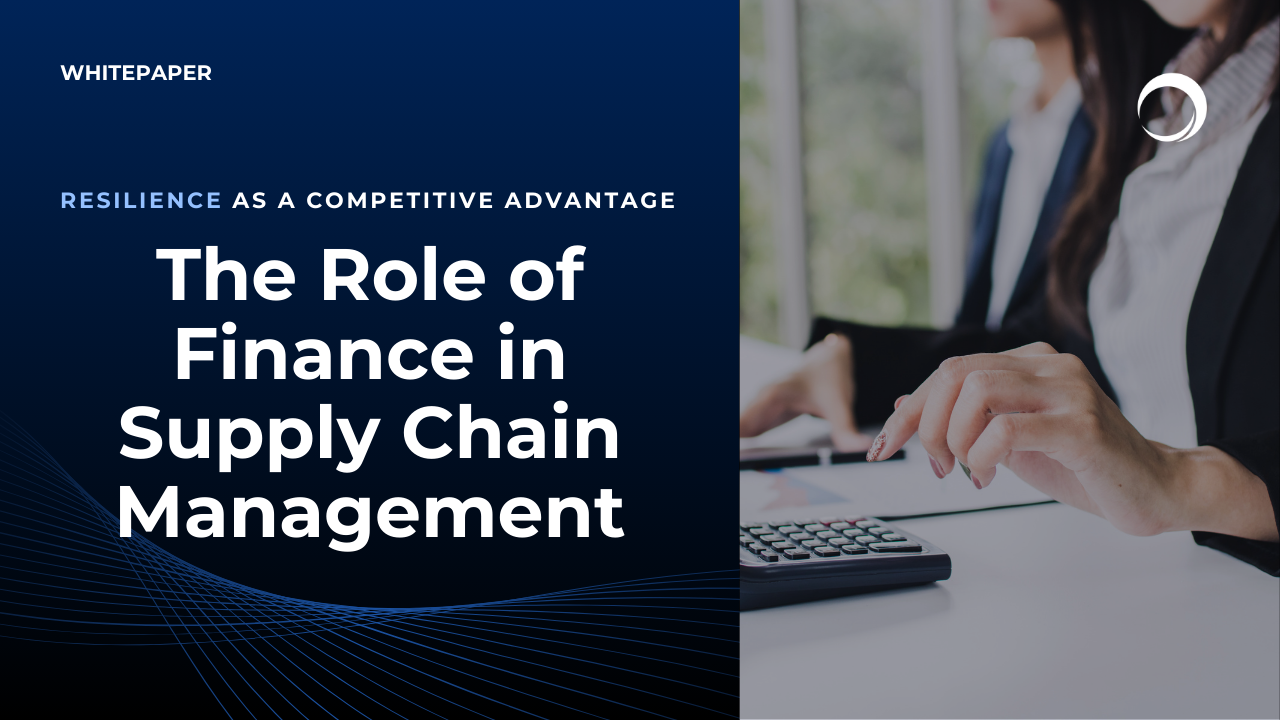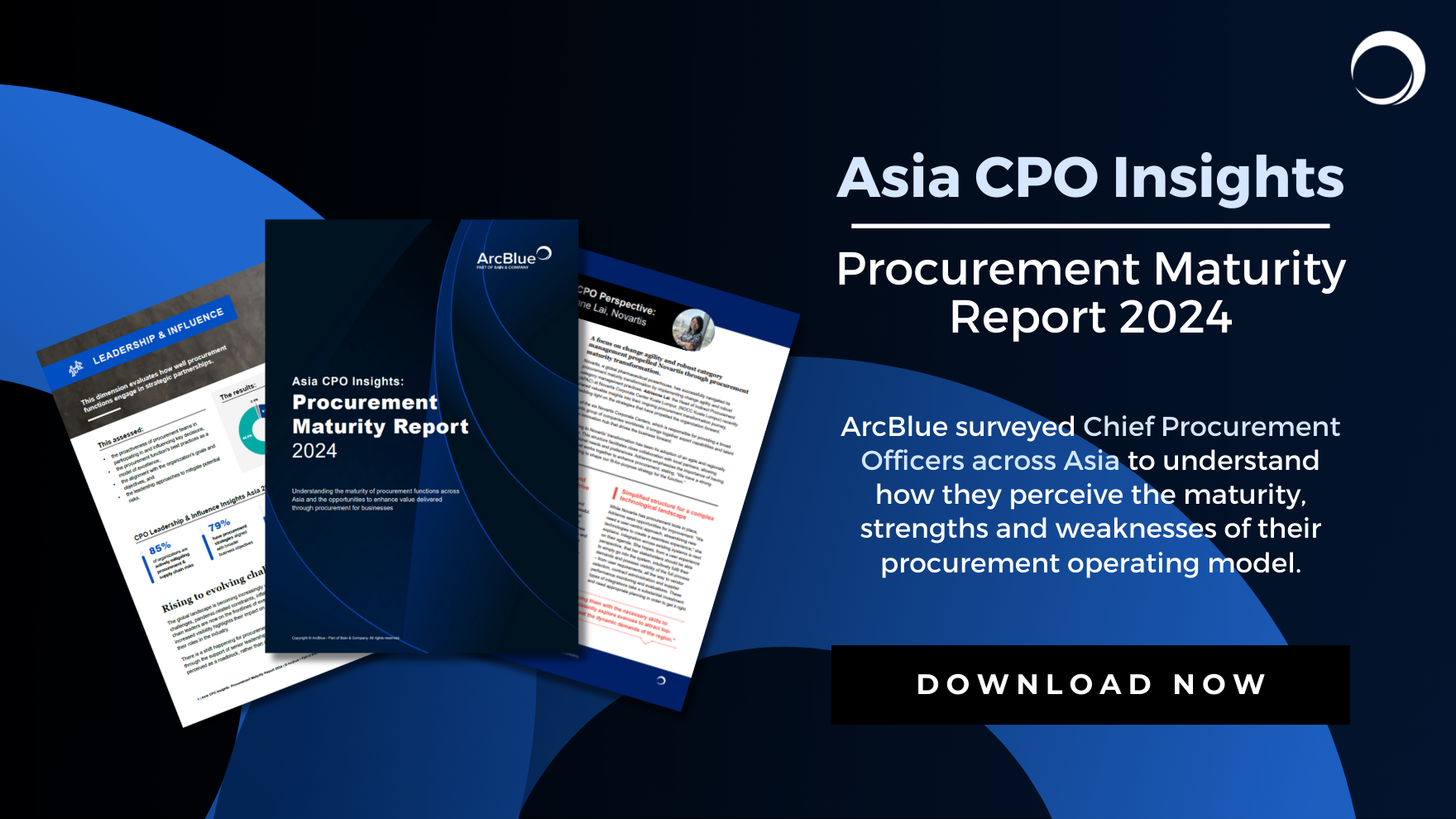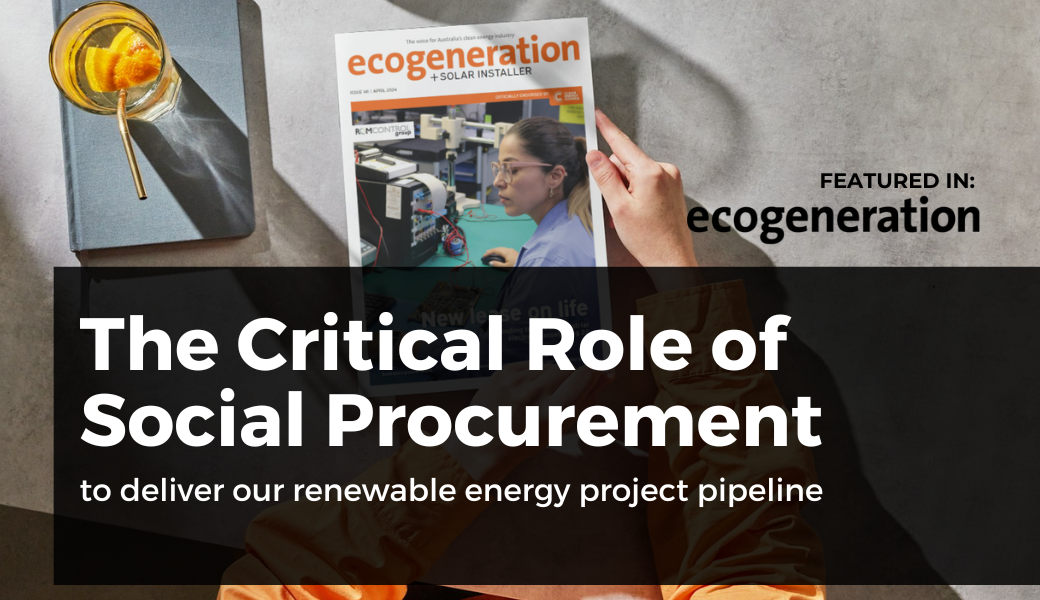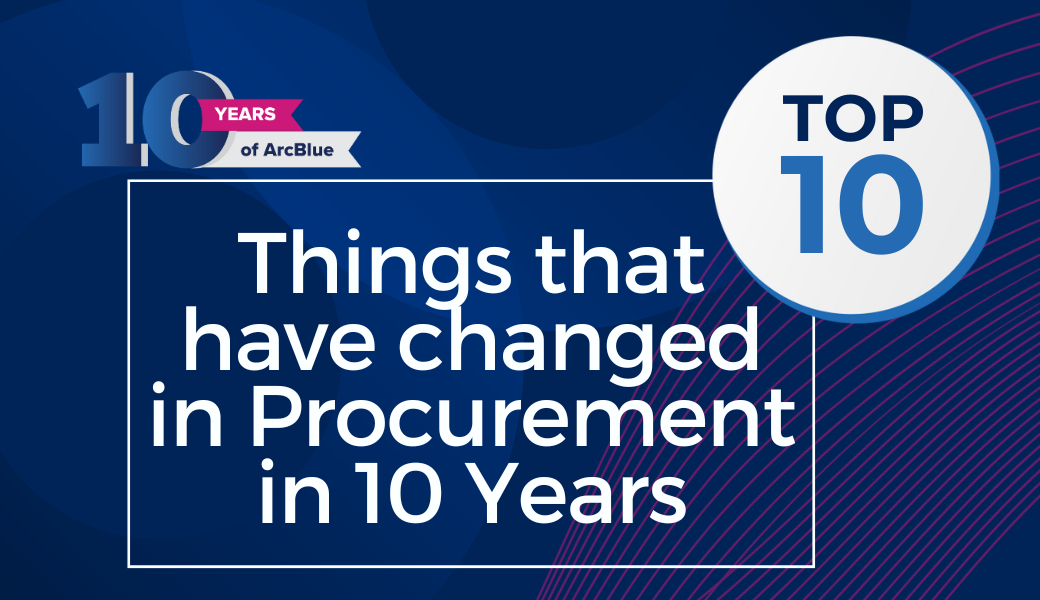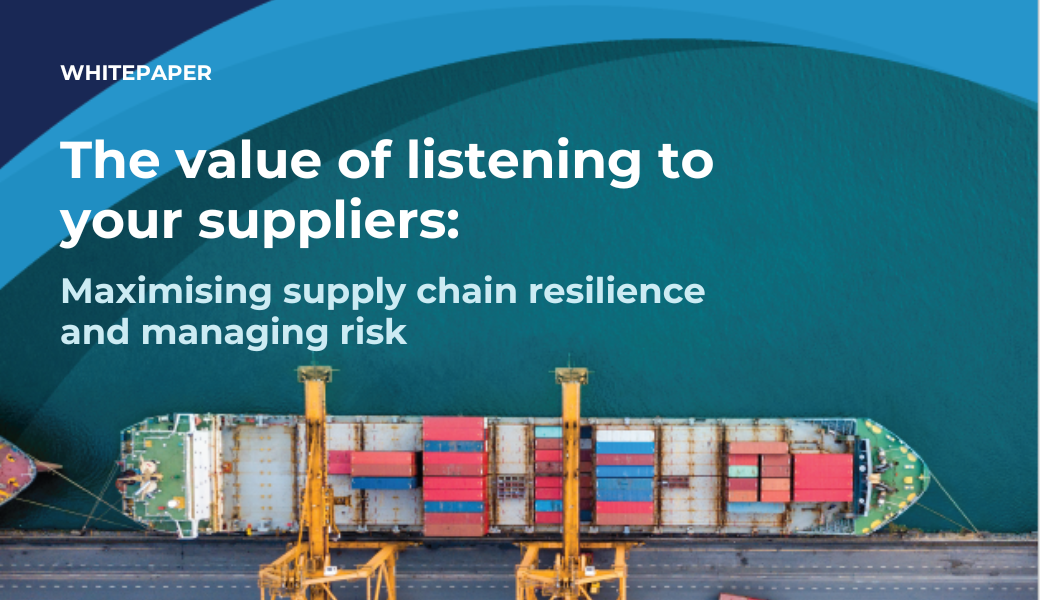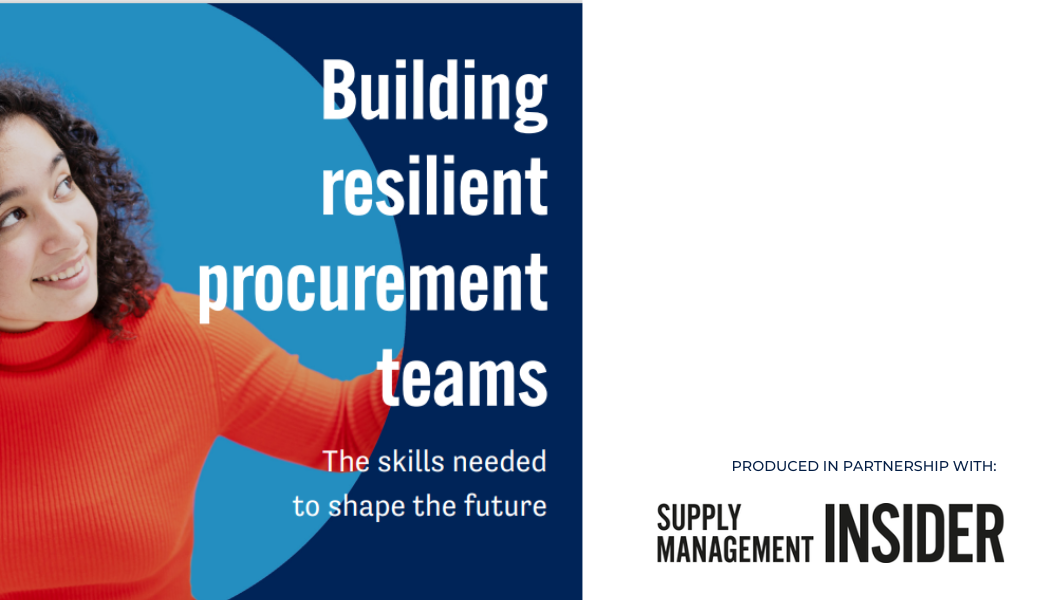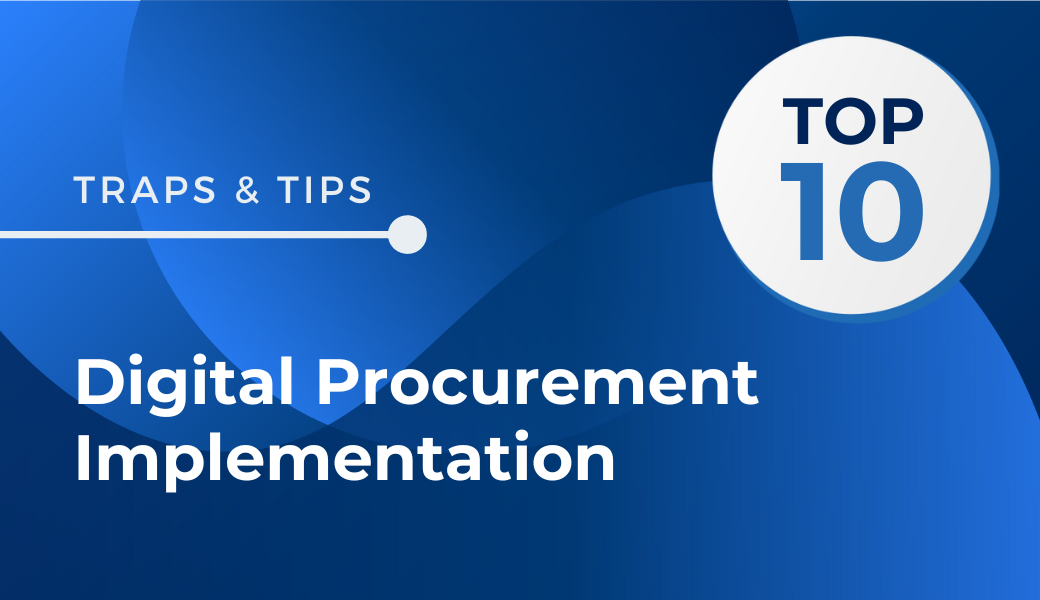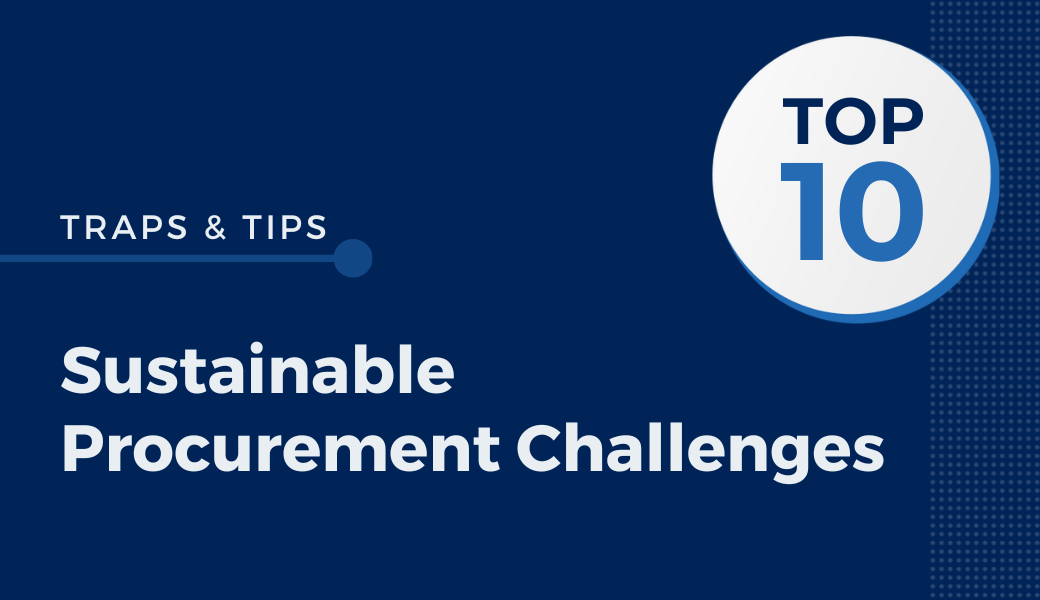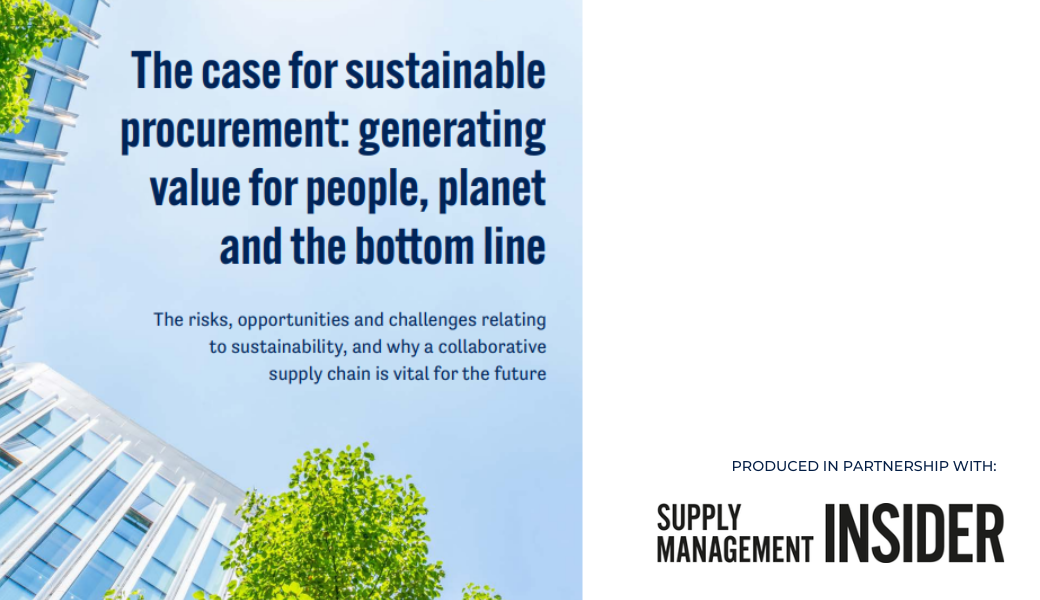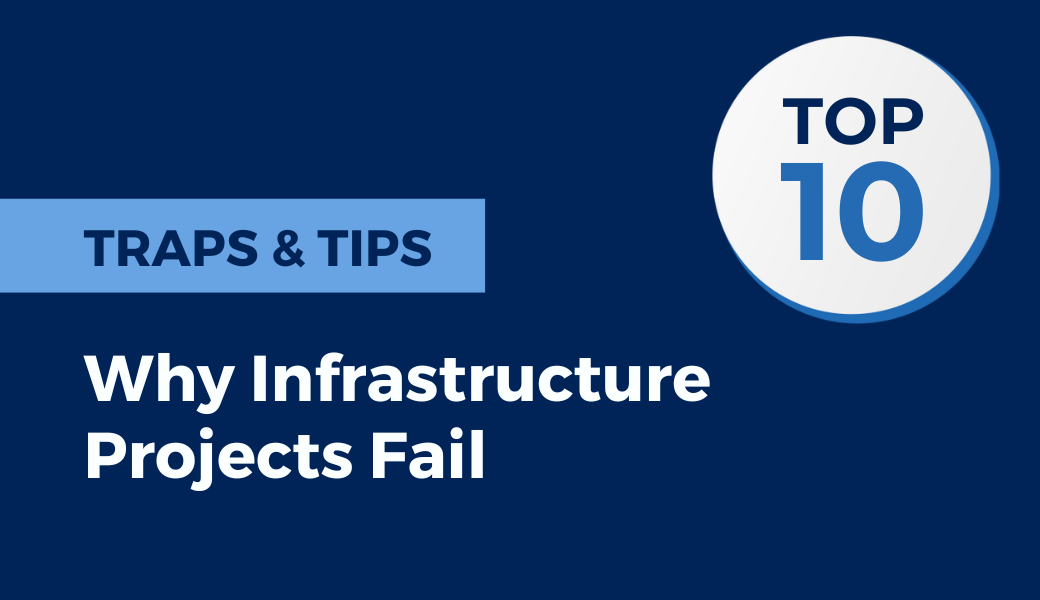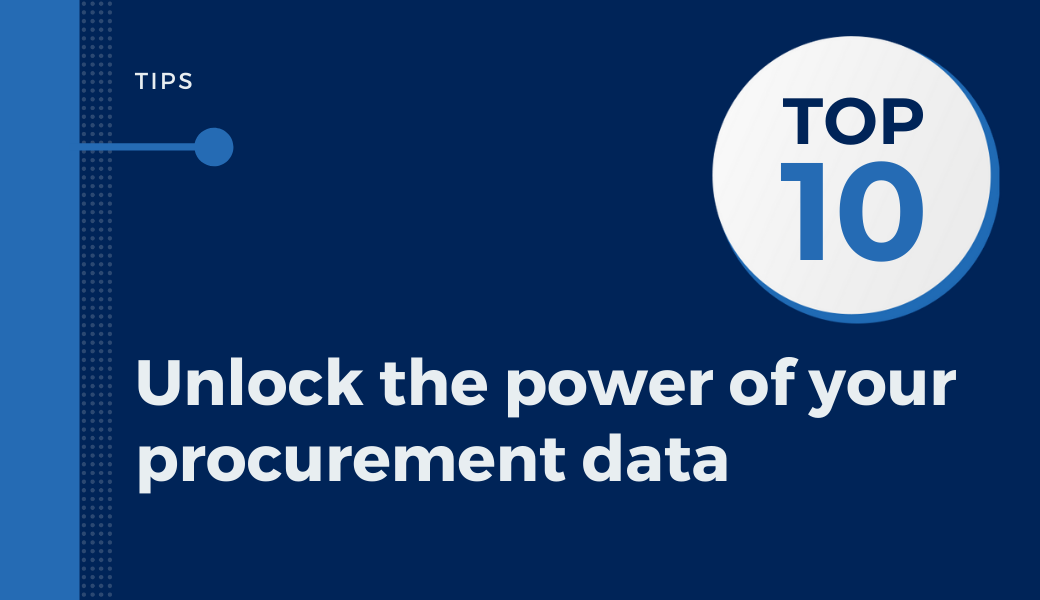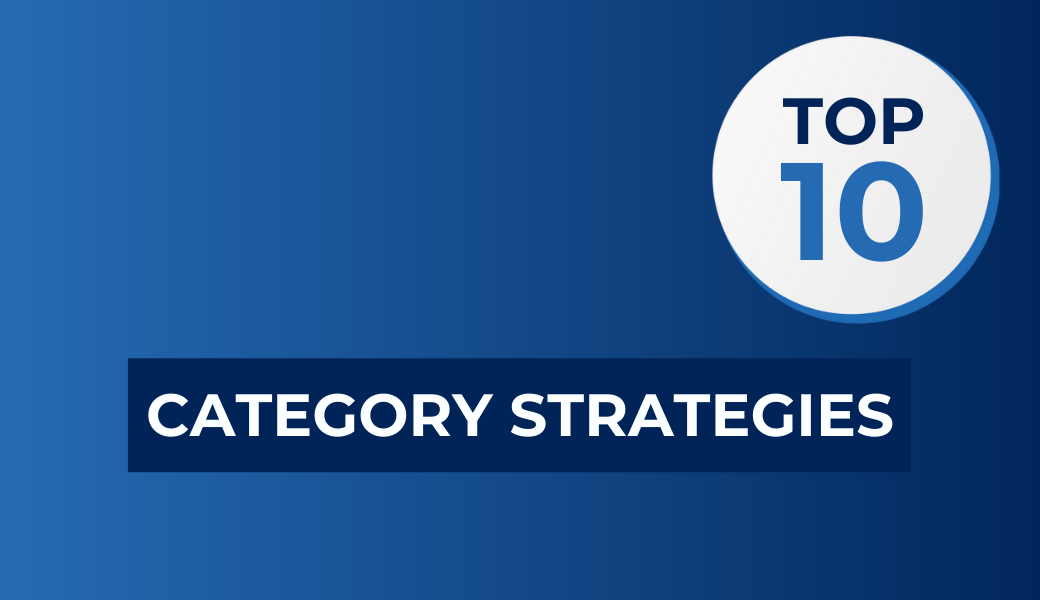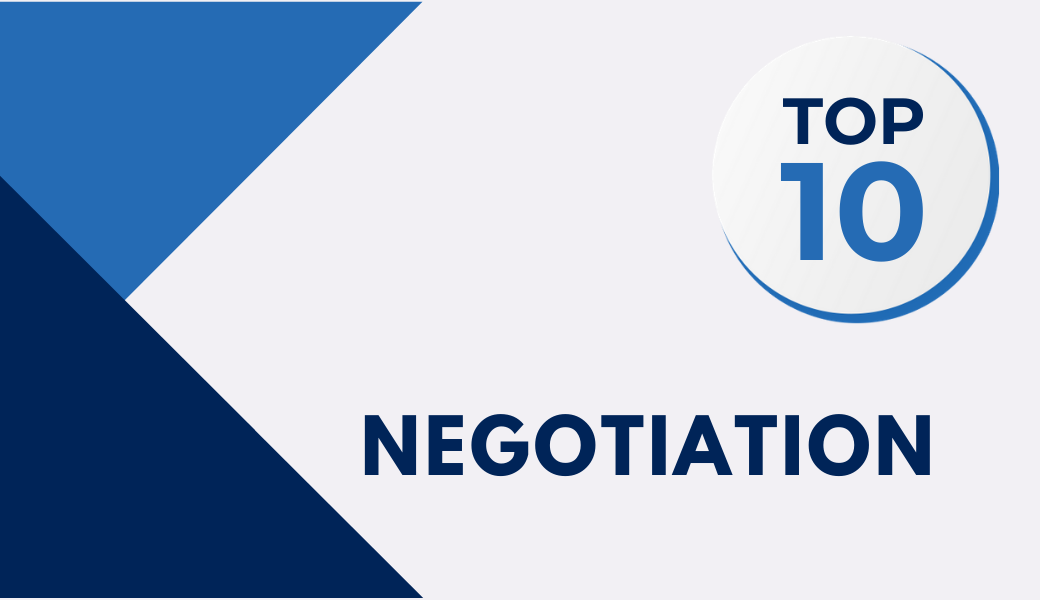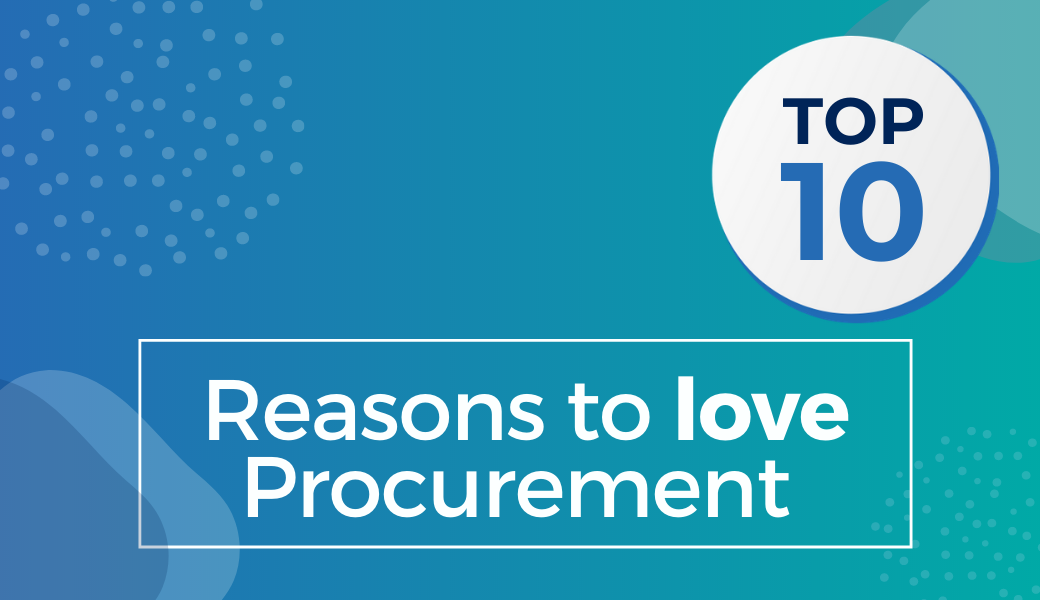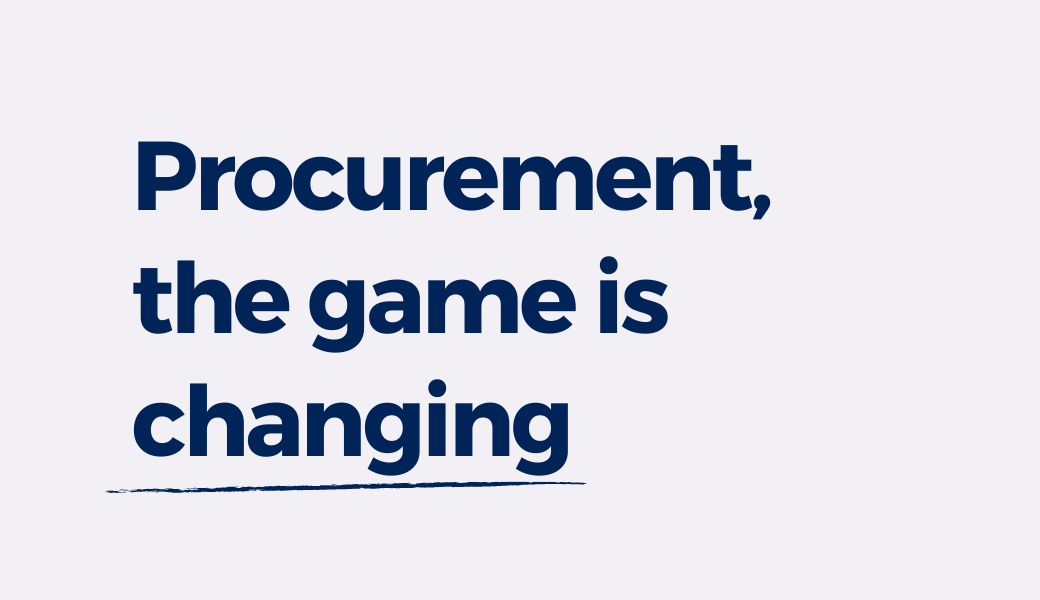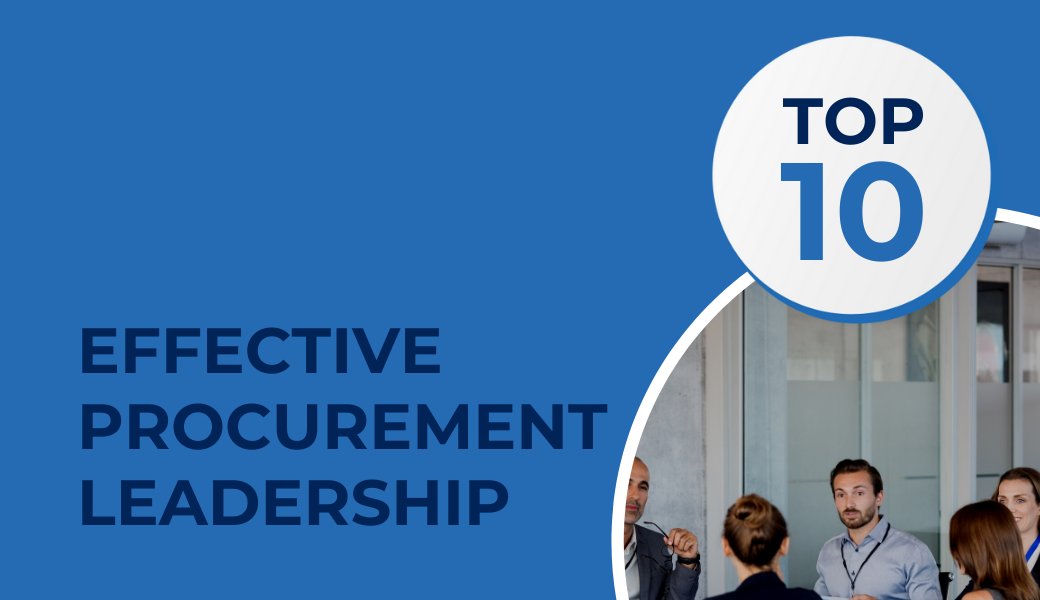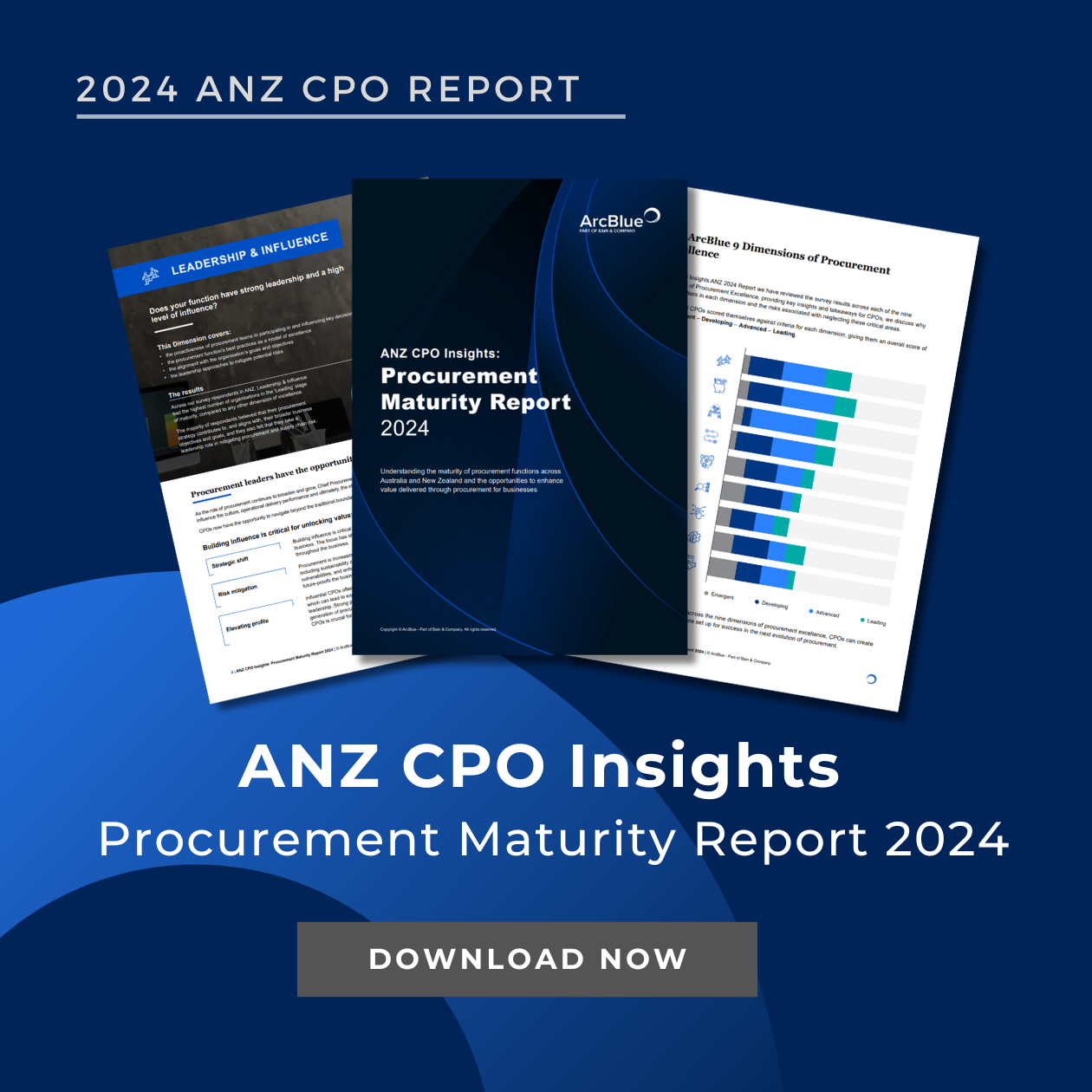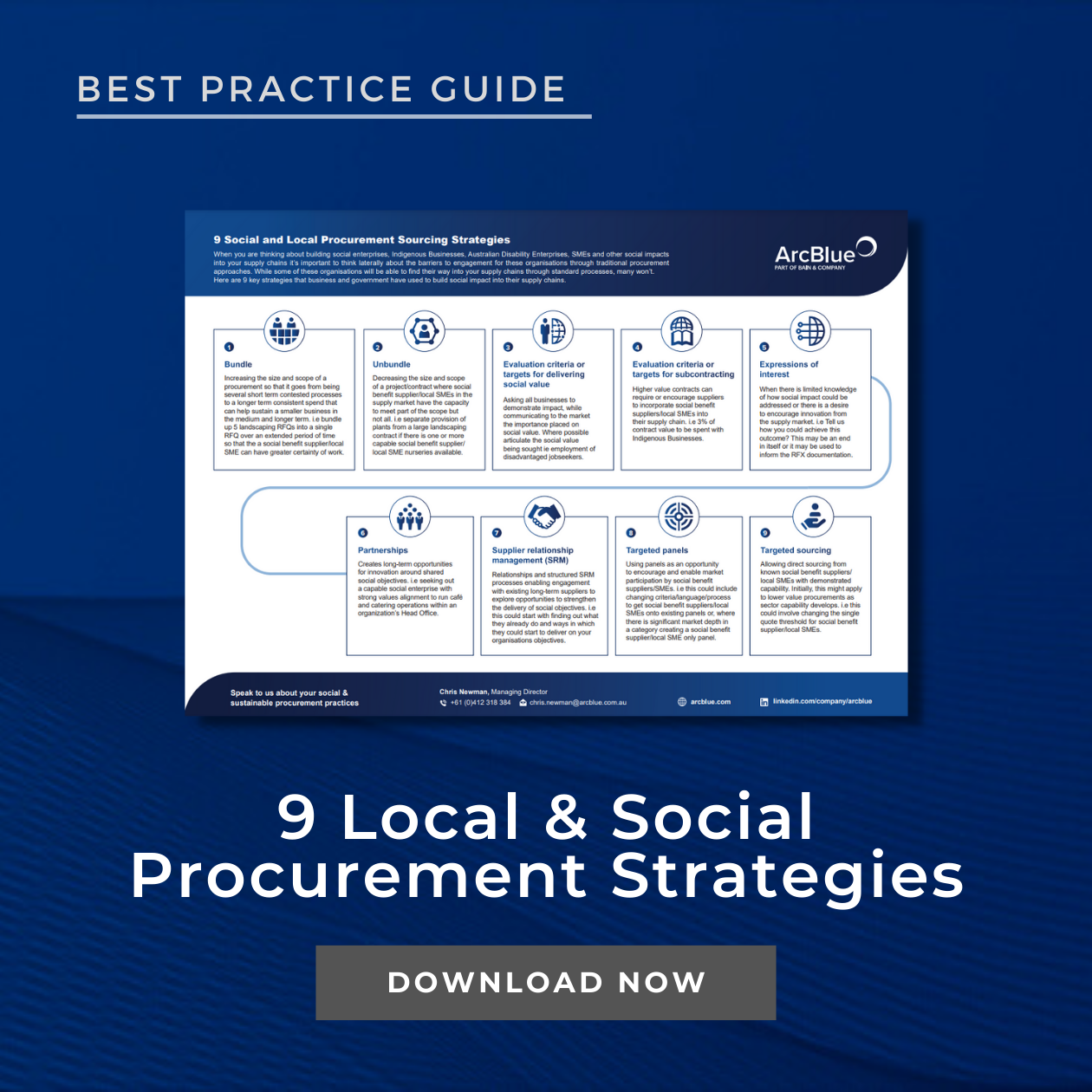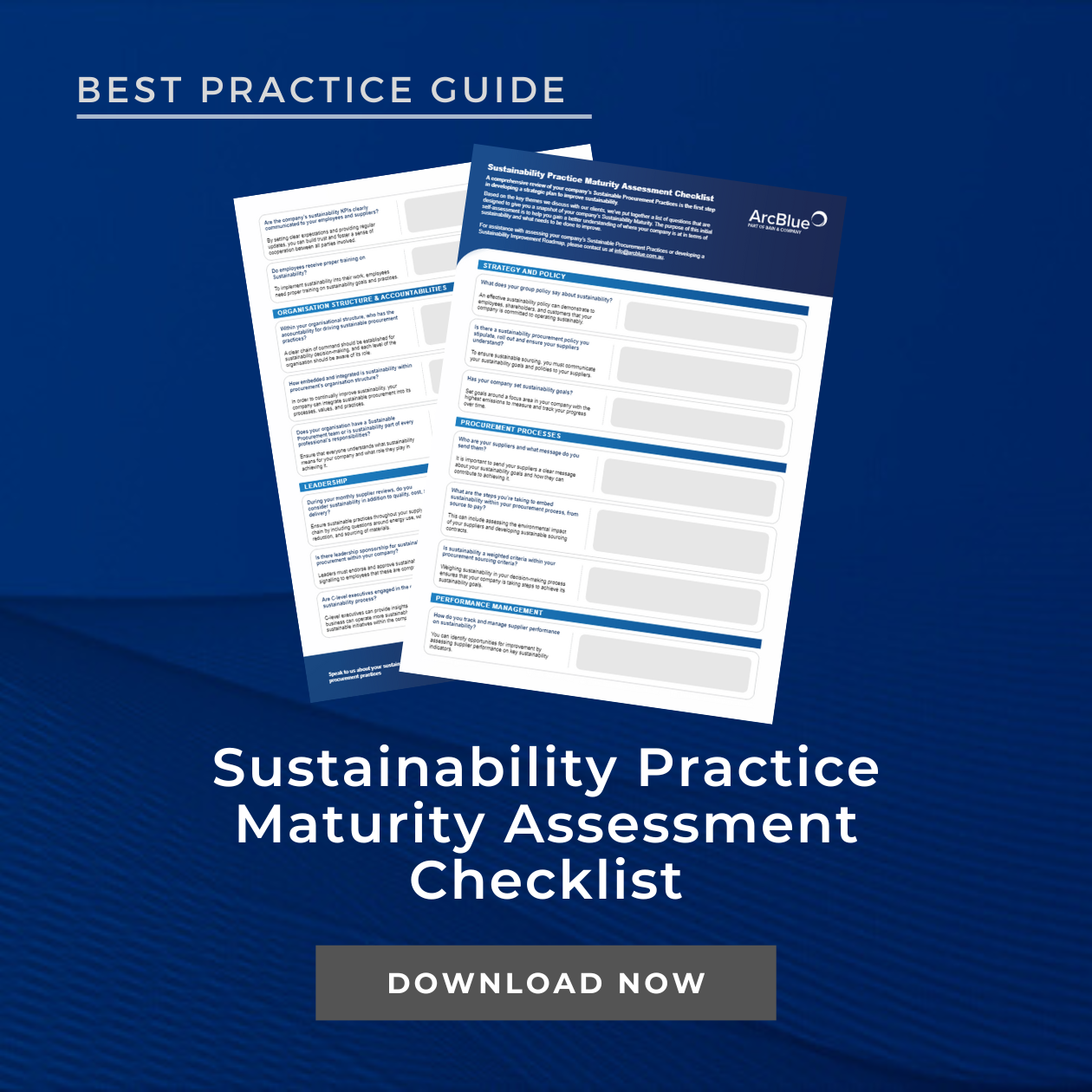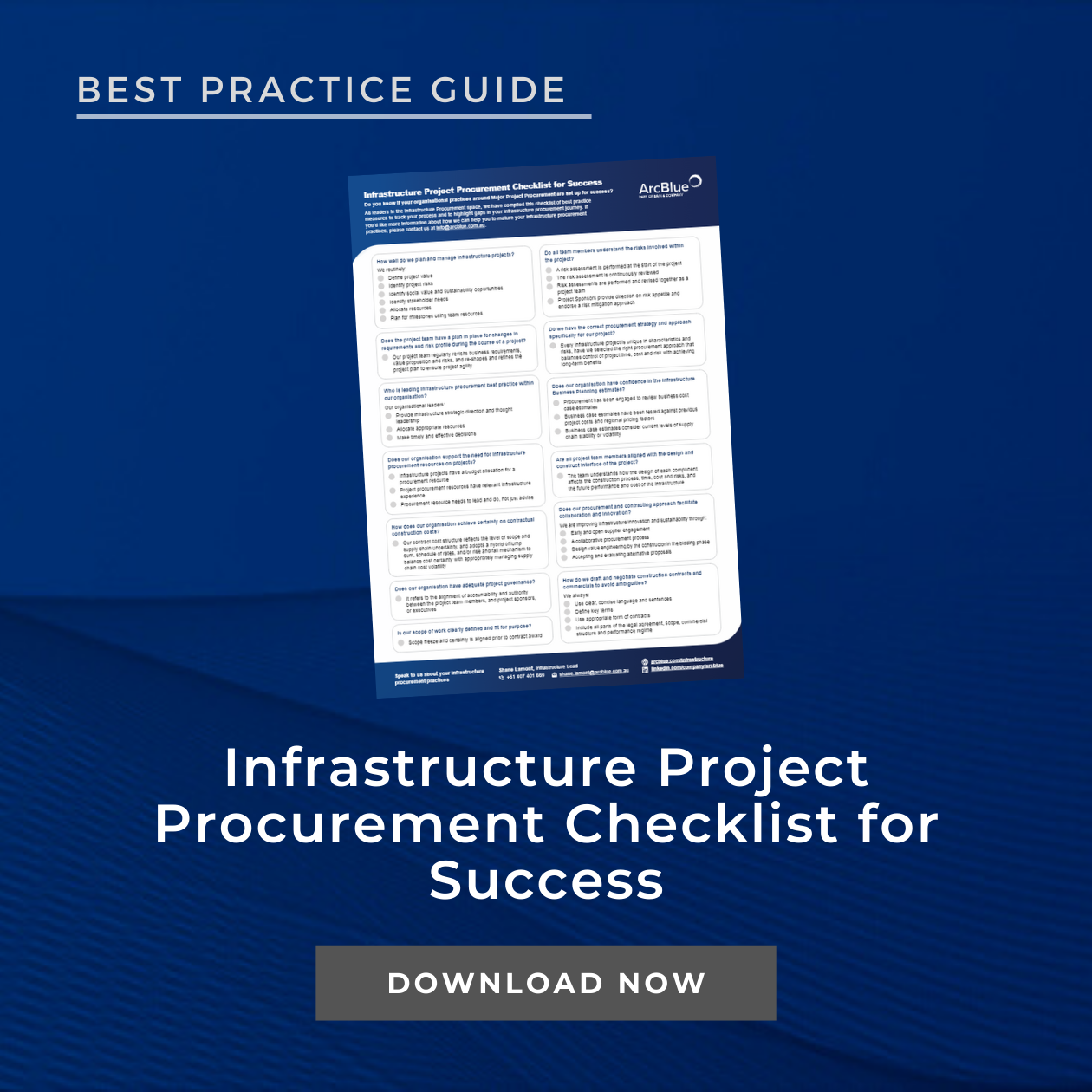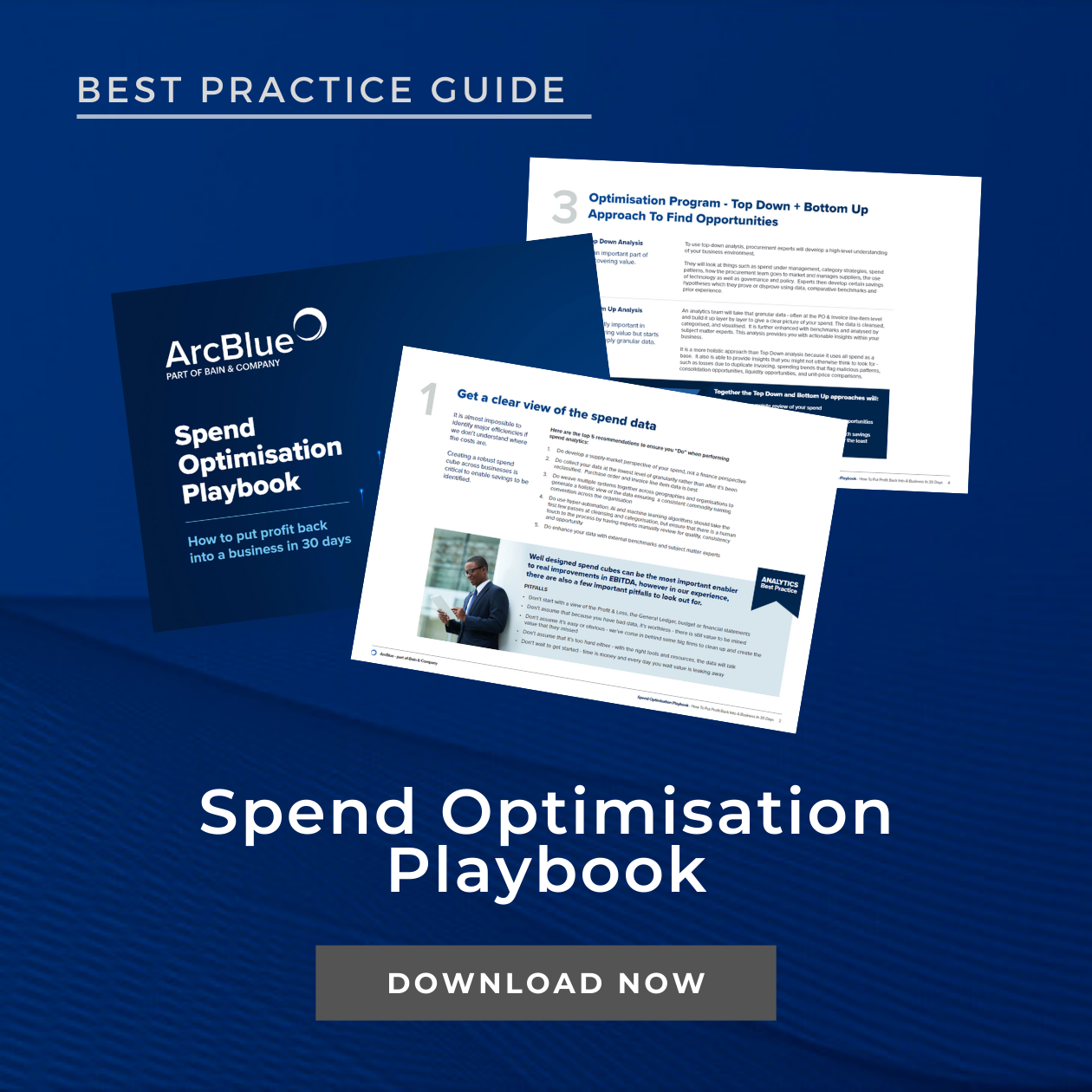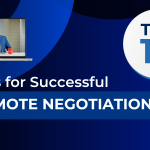- ARTICLE
Procurement in a Shifting Economy:
Navigating Australia’s Economic Headwinds
June 2025
ArcBlue Director Chris Gardner explores how recent macroeconomic and microeconomic pressures are reshaping the role of procurement in Australian organisations. The article outlines how procurement leaders must evolve their approach, providing six key strategies for CPOs.
Over the past 6–12 months, Australia’s economic landscape has been shaped by a complex mix of global and domestic pressures. From persistent inflation and high interest rates to geopolitical uncertainty and supply chain disruptions, these macro and microeconomic forces have had a profound impact on how organisations operate—and how procurement teams deliver value.
In today’s rapidly shifting business landscape, traditional procurement strategies no longer suffice; organisations must adopt dynamic, risk-mitigating frameworks that optimise costs while maintaining resilience.
This article explores advanced procurement strategies, equipping leaders with granular subcategory analysis, Buy Better vs. Spend Better execution, and Supplier Relationship Management methodologies tailored for turbulent market conditions.
Author
Related Services
What Has Been Happening in the Economy?
Macroeconomic Pressures: A Slower, More Cautious Economy
Australia’s macroeconomic environment has been defined by cautious optimism. While inflation has begun to ease, it remains above the Reserve Bank of Australia’s target, prompting the RBA to hold interest rates steady amid signs of a softening labour market. Economic growth forecasts have been revised downward, with GDP expected to grow just 1.75% in 2024–25, rising to 2.25% in 2025-26. This reflects weaker household consumption, tighter monetary policy, and a more constrained fiscal outlook, with the federal government facing a $23 billion downgrade to its budget position over the next three years.¹
Externally, Australia has not been immune to global headwinds. Slower growth in key trading partners, particularly China and parts of Europe, alongside heightened geopolitical tensions, such as the conflict in the Middle East and ongoing instability in Eastern Europe and the South China Sea, continue to expose critical supply chain vulnerabilities. Ongoing supply chain fragility has added to the uncertainty. These factors have weighed on business confidence and investment appetite, prompting many organisations to reassess their cost structures and risk exposure.
Microeconomic Impacts: Households and Businesses Under Pressure
At the household level, elevated mortgage repayments have dampened consumer confidence and discretionary spending.
For businesses, the pressure has come from multiple directions: rising input costs, tighter margins, and a more cautious customer base. In this environment, procurement and supply chain functions have become critical levers for managing cost, risk, and resilience.
The Impact on Procurement: From Tactical to Strategic—With Constraints
Current economic conditions are beginning to reshape the way procurement is undertaken in Australia. On one hand, procurement has become more central to business strategy.
Boards and executive teams are looking to procurement not just for cost savings, but for insights into supplier risk, market dynamics, and operational resilience. Organisations are increasingly focused on working capital optimisation—freeing up cash tied up in inventory, reassessing payment terms, and streamlining procurement processes. Supplier relationships are under greater scrutiny, with a renewed emphasis on transparency, fairness, and mutual value creation.
However, the ability for procurement to act strategically is being tested. Budget constraints, resource limitations, capability gaps, and short-term financial pressures can pull procurement back into a reactive, transactional role. Strategic initiatives—such as supplier innovation, ESG integration, or digital transformation—may be being deprioritised in favour of immediate cost control.
That said, many leading procurement teams are finding ways to balance both. They’re using data to identify inefficiencies, collaborating cross-functionally to align procurement with broader business goals, and engaging suppliers in more meaningful, value-driven conversations. Inventory management, in particular, has emerged as a key focus area. As one ArcBlue consultant noted, “We’re seeing CFOs open the doors to the warehouse and ask, ‘What’s really going on here?’ Procurement needs to be ready with answers—and solutions.”
Looking Ahead: Procurement’s Role in Economic Recovery
As Australia looks toward a more stable economic footing in the second half of 2025, procurement will continue to play a pivotal role. The challenge will be to maintain strategic momentum while navigating ongoing volatility. This means investing in capability, embracing digital tools, and staying close to both internal stakeholders and external partners.
In a world of constrained resources and heightened expectations, procurement’s ability to think long-term while delivering short-term impact will be more important than ever.
How Procurement Leaders Can Respond: Strategies for CPOs in a Shifting Landscape
In the face of economic uncertainty and operational pressure, Chief Procurement Officers (CPOs) and procurement leaders are being called upon to do more than just manage spend—they’re expected to drive resilience, unlock value, and support broader business transformation.
To meet these expectations, procurement leaders must adopt a proactive, strategic approach that balances immediate needs with long-term goals.
Invest in Data & Visibility
One of the most common barriers to effective decision-making is poor visibility. Leaders should prioritise investments in procurement analytics, spend visibility tools, and supplier performance dashboards. These tools not only help identify inefficiencies but also support more informed, agile decision-making in volatile conditions.
By leveraging data, procurement can uncover hidden opportunities, mitigate risks, and make proactive adjustments to strategies.
Buy Better vs. Spend Better: Beyond Conventional Cost Strategies
Effective procurement isn’t just about negotiating better supplier terms; it requires a dual-framework approach that balances external sourcing efficiency with internal cost discipline.
- Buy Better focuses on supplier-side improvements such as optimised contract negotiations, strategic vendor partnerships, and data-driven sourcing.
- Spend Better targets internal efficiencies through demand management, process automation, and benchmarking.
By implementing both frameworks, procurement leaders can drive targeted cost-out strategies that maximise savings without compromising operational performance.
Strengthen Supplier Relationships and Risk Management
In a constrained market, supplier collaboration becomes a competitive advantage. CPOs should encourage their teams to engage suppliers in more strategic conversations—exploring opportunities to drive innovation, flexibility, and mutual value creation. At the same time, robust supplier risk assessments and contingency planning are critical to maintaining supply continuity.
SRM Strategies for Procurement Resilience:
- Multi-supplier strategies to reduce dependency
- Resilience-driven contracts with flexible terms
- AI-powered analytics to anticipate disruptions
By strengthening SRM execution, organisations create agile procurement ecosystems that withstand instability while fostering long-term supplier partnerships.
Optimise Working Capital Through Procurement Levers
Leaders in procurement and finance can positively influence working capital by reviewing payment terms—potentially freeing up 5-10% of cash flow—leveraging dynamic discounting to capture 1-3% savings, and improving inventory turnover to reduce holding costs by 10-20%.
These levers should be applied thoughtfully, with consideration for supplier health and long-term relationships.
Tactics for Working Capital Optimisation:
- Segment suppliers to tailor payment strategies
- Use dynamic discounting to unlock early payment benefits
- Improve inventory visibility and turnover rates
These approaches not only improve liquidity but also enhance supplier trust and operational efficiency.
Drive Process Simplification and Digital Enablement
Now is the time to streamline procurement processes and embrace automation. Simplified workflows, digital contracting and integrated sourcing platforms can reduce cycle times, improve compliance, and free up teams to focus on strategic work.
Digital Enablement Priorities:
- Automate routine procurement tasks
- Integrate sourcing and contract management tools
- Enable real-time data access for faster decision-making
Digital transformation is no longer optional—it’s a critical enabler of procurement agility and performance.
Build Capability and Resilience in the Team
Procurement leaders must invest in their people. This includes upskilling teams in areas like commercial negotiation, data literacy, and supplier collaboration. It also means fostering a culture of curiosity and adaptability—qualities that are essential in a fast-changing environment.
Team Development Focus Areas:
- Training in strategic sourcing and analytics
- Cross-functional collaboration and stakeholder engagement
- Leadership development for future-ready procurement teams
A resilient, capable team is the foundation of a high-performing procurement function.
Amid Australia’s anticipated transition to a more stable economic environment in the second part of 2025 procurement has an opportunity to play a pivotal role.
The challenge will be to maintain strategic momentum while navigating ongoing volatility. Success depends on strengthening capabilities, adopting digital solutions, and fostering close collaboration across internal and external networks.
Procurement leaders must move beyond traditional transactional approaches and embrace strategic foresight. Achieving success means aligning procurement with risk-adjusted strategies that optimise value while safeguarding supply resilience.
Key Takeaways for Procurement Leaders
✔ Reframe procurement’s role as a strategic business enabler
✔ Invest in data and visibility to drive informed, agile decisions
✔ Strengthen supplier relationships and embed robust risk management
✔ Optimise working capital through tailored payment and inventory strategies
✔ Simplify processes and embrace digital tools for greater efficiency
✔ Build team capability and foster a culture of adaptability and innovation
To thrive, procurement leaders must become architects of business resilience—shaping strategies that drive efficiency, mitigate risk, and position their organisations for long-term success.
Source:
INSIGHTS
RESOURCES & DOWNLOADS






